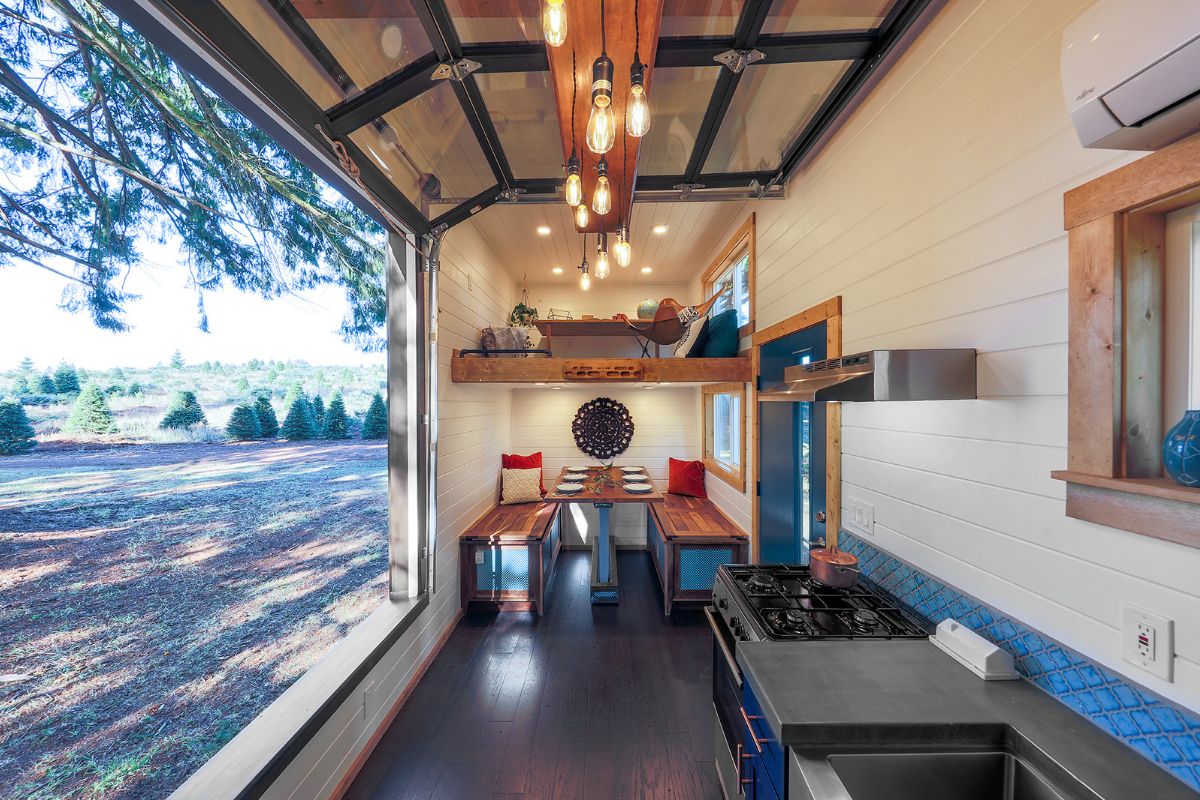Big houses used to be the dream, right? A fancy two-story place with five bedrooms, a formal dining room, and maybe a giant walk-in closet just for shoes.
But things are changing. People are starting to realize that maybe bigger doesn’t always mean better.
Maybe what we really want is a space that feels good to live in—not just to show off.
And that’s where small house plans come in. They’re not about squeezing into a shoebox or sacrificing comfort.
They’re about designing a home that actually works for you, not against you.
Let’s dig into why more people are loving the idea of going small—and how smart design makes it all possible.

The Small Home Movement: Why Less is the New More
There’s a whole shift happening in how people think about homes. For decades, the message was “bigger is better.” But now? People are saying, “Actually… I don’t need all this space.”
It’s not just about money—though yeah, smaller homes do cost less to build and keep up. It’s also about freedom.
Less space = less cleaning. Less maintenance. Lower energy bills. More time to do things you actually enjoy.
For example, instead of spending your Saturday scrubbing three bathrooms, you could be hiking, reading, or just sipping coffee on the porch. Less house means more time for, well… life.
And then there’s the whole sustainability factor. Smaller homes are better for the planet. They use fewer materials, occupy less land, and generate less waste.
And here’s another big one—less space means fewer things.
You’ll be surprised how freeing it feels to let go of stuff you don’t actually need.
No more closets overflowing with clothes you never wear. No more junk drawers in every room.
Just the essentials—and that’s more than enough.
It’s no wonder minimalists, eco-conscious folks, and even retired couples are getting on board.
In fact, as highlighted in a recent Forbes article, there's a noticeable shift as homeowners move away from oversized properties towards more minimalist, right-sized homes that better fit their lifestyles.
Now, let’s be clear—small homes aren’t the same as tiny homes. Tiny homes are usually under 400 square feet and often on wheels.
Small homes? They’re usually somewhere between 800 and 1,500 square feet.
So you still get room to breathe, just without all the extra fluff you don’t really use anyway.
It’s the sweet spot between cozy and cluttered. You can still host dinner with friends or have a guest room—just without wasting space on formal rooms you barely use.

So, What Makes a House Plan “Small”?
Let’s break it down. Small house plans are designed to make the most out of every square foot. They cut the clutter and focus on what really matters—function, comfort, and smart layout.
A great small home doesn’t feel cramped. It feels cozy, open, and just right. The magic is in the design. Rooms flow into each other. Natural light is a big deal.
And there’s not a single square inch that doesn’t have a job to do.
These homes are also super versatile. They work for all kinds of people—first-time buyers, downsizers, couples starting fresh, or even solo homeowners who just want something simple.
And here’s the best part: Small barndominium floor plans allow for thoughtful, resource-conscious design without compromising comfort or functionality.
How to Make Small Spaces Work Big
Alright, now let’s talk design. If you're working with less space, how do you keep it from feeling, well… small?
Here’s what actually helps:
1. Keep It Open
Open floor plans are your best friend. When walls come down, everything feels bigger and brighter.
Kitchen, dining, and living areas flow together—so even if your home is small, it won’t feel small.
2. Let the Light In
Natural light is a game-changer. Big windows, glass doors, skylights—whatever it takes to bring the outside in.
More light = more space. At least, that’s how your brain sees it.
3. Think Vertically
When floor space is limited, go up. Tall shelves, lofted beds, vertical storage solutions… use every inch from floor to ceiling.
4. Double Up
In a small home, everything needs to multitask. Try a fold-down desk that disappears when you’re done working. Or a Murphy bed that turns your bedroom into a workout space during the day.
Even your kitchen table can have built-in storage for placemats, games, or cookbooks. A bench that opens up to hide blankets. A home office that doubles as a guest room.
Get creative. Small space living is all about flexibility.
5. Blend Indoors and Out
Got a patio, deck, or balcony? Use it! Sliding doors can blur the line between inside and outside—giving you more room to relax, eat, or entertain.
Even a little outdoor area can make your space feel twice as big.

Small Homes = Small Challenges (But Totally Manageable)
Now, let’s keep it real. Small homes aren’t perfect. They come with some unique challenges.
But the good news? They’re all fixable.
Zoning Rules Can Be Weird
Some areas have rules about minimum house sizes or where you can build smaller homes.
Solution? Do your research early, and work with a builder who knows the local codes.
Storage Takes Some Thought
It also helps to downsize slowly. Start by donating or selling items you rarely use.
Once you see the space open up, it gets easier to let go of the rest.
You might not have a giant garage or attic. But that’s okay—you’ll get better at keeping only what you really need. Plus, furniture with built-in storage is everywhere now.
Design Balance Is Key
In a small home, there’s no room to hide bad design. So it helps to keep things simple, stylish, and functional all at once.
Pinterest is your friend here. So are good architects.
Why Small House Plans Actually Make a Big Impact
Going small doesn’t just help your wallet—it’s got some ripple effects too.
They’re Better for the Planet
Smaller homes mean less heating, less cooling, and fewer materials during construction. That’s a big win if you care about lowering your carbon footprint.
They Open Up Opportunities
Because they cost less, small homes are more accessible. Young buyers can finally afford to get in. Retirees can live comfortably on a fixed income. And people who move often? They’re not tied down to a mortgage they can’t escape.
They Redefine the “Dream Home”
A dream home doesn’t need to be massive. It just needs to feel right for your life. Small homes encourage you to be intentional. To focus on what matters, not just what looks good on Instagram.
Plus, smaller homes tend to have more character. Quirky nooks, custom shelves, and creative layouts make them feel personal. You’re not buying a box—you’re building a lifestyle that feels totally your own.
Wrapping It Up: Why Living Small Just Might Be the Best Move You Make
At the end of the day, small homes are about freedom. Freedom from debt. Freedom from clutter. Freedom from cleaning four bathrooms you don’t even use.
They’re about doing more with less. Designing smarter. Living lighter. And honestly? That feels pretty good.
If you're thinking about building a home that fits your life—not just your stuff—small house plans are 100% worth exploring.
Small doesn’t mean settling. It means choosing a home that matches your lifestyle and priorities. You’re not shrinking your dreams—you’re focusing them.
And when every room has purpose and every inch works hard, life just feels a little lighter.
So go ahead and rethink that dream home of yours.
It might be smaller than you imagined… and better than you ever expected.





Share: